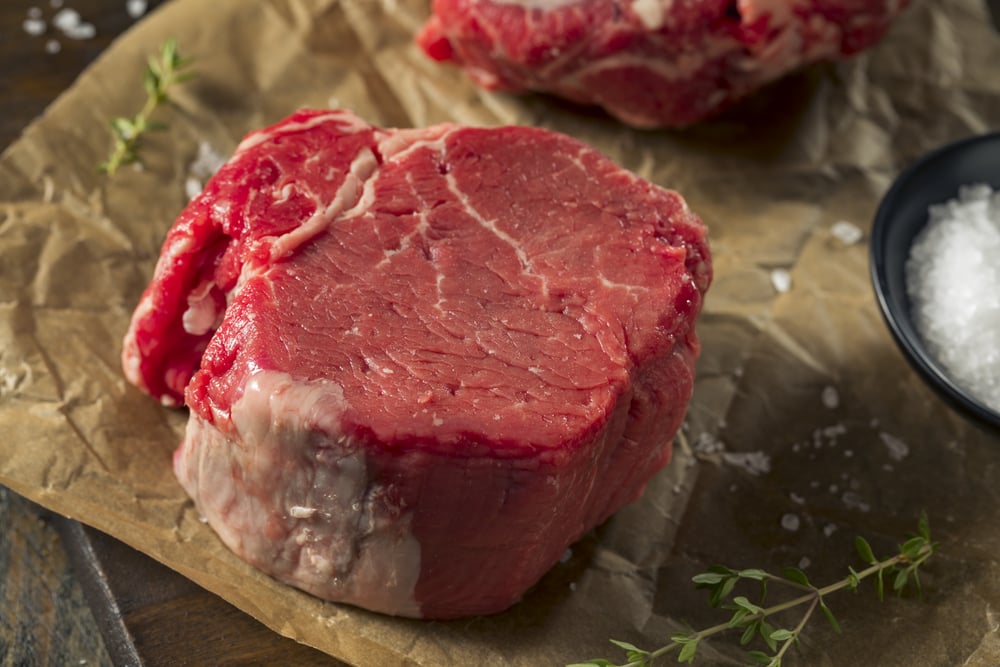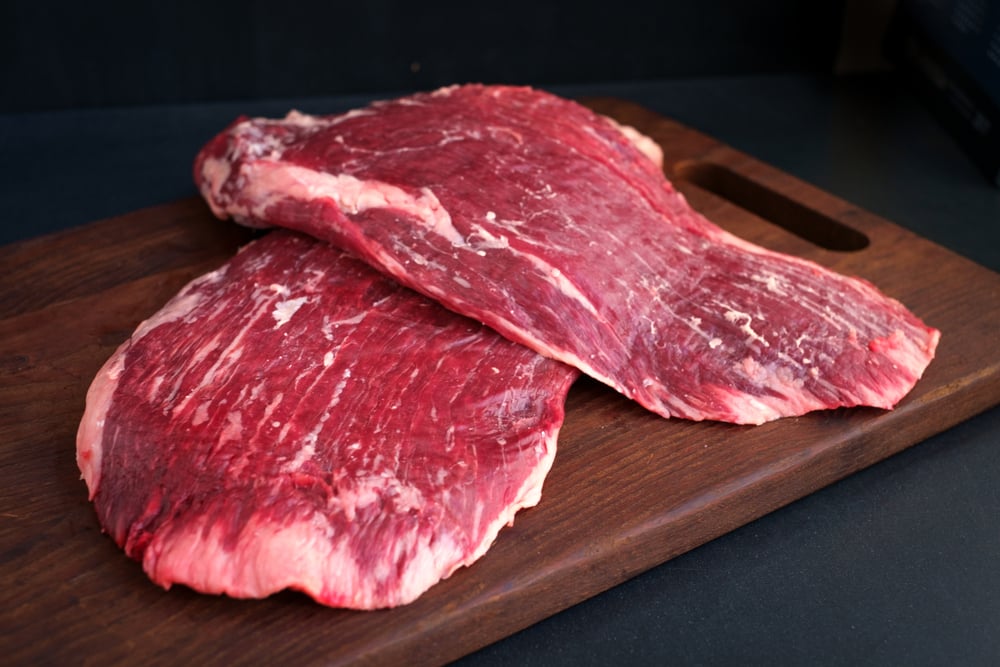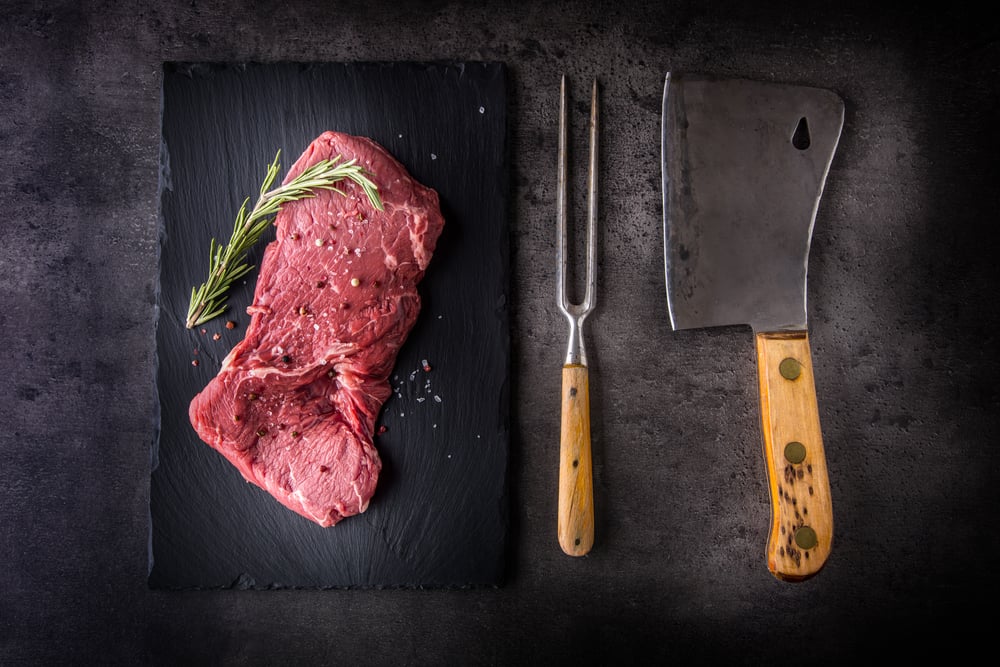Whats the Difference the Different Categories of Cooking Beef
Steaks come in all shapes, cuts, and sizes. They can be cooked in various ways to suit each person's preference ranging from rare to thoroughly cooked through. A steak's marbling (red meat that contains different amounts of intramuscular fat), tenderness, and price can vary widely with each cut having unique flavors and qualities.

Some steaks are best cooked on a grill while others excel on stovetops. Whichever way you cook a steak, they should all have something in common – each cut should be delicious.
When heading to the meat section of your grocery store, or the butchers, you will usually be met with a myriad of steak options that can leave you baffled as to which one to choose.
Yes, deciding you want steak for dinner is easy. Deciding on what type of steak is more difficult.
<
There is no need to panic! We are here to help. In today's blog, we will be running through the different types of steak that are both delicious and easily available for you to enjoy.
From the famous ribeye steaks to the less known tri-tip steak, we want you to find the one that will be on your dinner table tonight!
So, let's not wait any longer. Here are the different types of steak that you should know about.
1. Ribeye Steak
We begin with one of the most famous types of steak out there, the ribeye steak. Sometimes known as Delmonico steaks due to their popularization by Dolmenico's restaurant in New York City, these steaks are one of the fattiest of the lot.

Ribeyes are loaded with marbling giving them a whole lot of flavor. This is why many consider these to be the tastiest of all steaks.
When it comes to cooking your ribeye, the prep is simple. Due to a great deal of marbling, you just need to season it with salt and pepper.
Cook over high heat on your grill or in a cast-iron skillet to achieve a mouth-watering sear. And, due to its high-fat content, overcooking is generally not an issue as it will remain juicy.
Learn the difference between ribeye steaks and sirloin steaks to further your knowledge!
2. Tenderloin Steak aka Filet Mignon
The tenderloin steak is a cut from the loin of a cow. Also known as a filet mignon steak.

Because this tenderloin muscle gets little exercise, the steak contains less connective tissue making it more tender than many other types of steak.
Because tenderloins are so lean, they are not considered to be as flavorful as many other cuts.
However, what they lack in marbling, they make up for with a smooth, buttery texture that melts in the mouth every time.
With such low-fat content, tenderloins should not be dried out. Begin with a cast-iron skillet over high heat and sear both sides quickly.
Overcooking will usually result in a crispy, thin steak that, let's face it, has been ruined.
3. Strip Steak
You may have tried a strip steak without even knowing it. These are also known as Kansas City Strip steaks (with the bone), New York Strip steak (boneless), and a Top Sirloin steak.

This strip comes from the short loin area of a cow.
Head to any steakhouse and this will be one of their best-selling foods. This is down to its strong beefy flavor and a decent amount of marbling. The texture is quite tender but still chewy enough.
Cooking a strip steak is pretty easy too! You can pan-fry or sous-vide these steaks after only a little seasoning of salt and pepper.
Cook over high heat but keep a close eye on it. Due to its lower fat content, we suggest cooking strip steaks a bit rarer than others.
4. Hanger Steak
The hanger steak may not be as well-known as the ribeye or tenderloin but if you're a steak lover, it's one you have to try.

This cut comes from the belly section of a cow. As the name suggests, this cut hangs from the diaphragm between the ribs and the cow's loin.
We believe it's an underrated cut of beef. It boasts lots of flavors and is very affordable. Many compare these to a skirt or flank steak but hangers are more tender.
When cooking, we recommend marinating hanger steaks. This helps to boost the overall flavor and helps them tenderize more. Grill over high heat to ensure it doesn't become too tough to bite into.
5. Porterhouse / T-Bone Steak
Fancy a large cut of beef with two types of steak in one? If so, the porterhouse steak is the one for you.

Containing tenderloin and strip steaks in one singular cut, porterhouse steaks are also sold on the bone. So, inner your Henry viii and eat like a king!
These steaks are incredibly tasty but, due to the two different fat contents, they are a little harder to cook than others. We suggest treating a porterhouse like a strip steak.
Cook over high, dry heat until it's medium-rare. You will have to check frequently to ensure the two steak types have cooked properly.
To make the strip and tenderloin sections cook at the same time, try to place the tenderloin further away from the high heat source.
If you have a meat thermometer, this will help guide you on where to position your steak.
6. Flank Steak
Here we have a favorite of many meat connoisseurs out there. Flank steaks are large and flat making them perfect for sharing with friends and family (or just keep it to yourself!)

This is a cut from the back region of a cow's abdominal muscles and is a relatively tough cut.
However, with careful and proper preparation, it can be a delectable tender piece of meat.
We highly recommend pairing flank steaks with strong, bold sauces such as chimichurri if you want to electrify your taste buds.
Flanks should be marinated to add more flavor and are best when you grill them over high heat.
Try not to overcook and keep these steaks around the medium-rare region.
7. Skirt Steak
Yet again, you may have eaten a skirt steak without realizing it. Long and thin, this cut of beef is extremely fatty and often served with fajitas.

Coming from the plate section of a cow's belly, the high-fat content is no surprise.
Skirt steaks contain an abundance of connective tissue making them uber tough. But, if you cook one correctly, it can be wonderfully tender.
Thanks to the high levels of fat, skirt steaks are some of the richest and most buttery of all steaks.
Due to a loose texture, skort steaks are great for marinating. Pan-sear or grill over extremely high heat to ensure you achieve a good char on its outside but make sure you do not overcook the center.
Also, you should cut this steak against the grain or it will be too chewy and take decades to eat.
8. Flat Iron Steak
Also known as a butler's steak and an oyster blade, the flat iron steak is a great affordable cut.

Wonderfully tender and flavorful, it's surprising how affordable this steak is compared to other more expensive types.
Cut from the chuck (lower neck and upper shoulder) section of a cow, the flat iron is a relatively new cut of steak.
Although one of the newest cuts, it is growing in popularity and is often found in butchers or meat markets.
You should grill a flat iron steak and, although marinating isn't necessary, we recommend it to boost the flavor and tenderness of the cut.
9. Short Ribs
Marbled like a ribeye steak, short ribs sport a significant amount of flavor with a thick, meaty texture.

While many chefs like to braise short ribs, you can also grill them to avoid any toughness.
Short ribs are particularly popular thanks to their affordability and you can buy them in thick or thin sections.
We recommend seasoning short ribs with salt and pepper. Then, grill the ribs over moderately hot but not scorching heat.
Aim for medium-rare for the best results. Ensure that you slice the cut against the grain to avoid any toughness.
Once cooked, we suggest eating these ribs alongside a bright chimichurri sauce for a burst of flavors.
10. Sirloin Steak
Often called top sirloin, these are boneless steaks that come from (surprise, surprise) the sirloin section of a cow (around the rear of the animal).

Sirloins are very popular pieces of meat but some argue that they have little flavor and are not tender. However, we have to disagree.
Sirloin steaks, when prepared and cooked properly, have a distinctly beefy flavor. With their cheaper price tag than many other types of steak, they are a firm favorite for weeknight meals.
Sirloin steaks do not have much fat content or intramuscular marbling. Therefore, you should be careful not to overcook them.
If you cook over a temperature that is above medium, the steak will turn out dry. Add some seasoning such as salt and pepper and some dry rub alongside for the most fantastic sirloin experience.
11. London Broil Steak
Okay, technically, this is a cooking method rather than a cut of beef. However, the majority of grocery stores sell steaks under the London broil name.

This steak is typically a top-round cut from the rear of a cow. Just make sure with the butcher first as flank steaks are sometimes sold under the London broil name as well.
When it comes to cooking, it's best to marinate a London broil steak with some sort of acidic ingredient such as lemon.
This will help break down any of the tough muscle fibers. Once marinated, flash-sear the meat in a hot pan or atop a grill. Try not to overcook London broil as it can become tough and too chewy.
Try to cook the steak in a medium-rare to medium range. Also, cut the steak against the grain after it has cooked to maintain tenderness.
If you're a fan of homemade beef jerky, London broil is a great cut of beef to get you started!
12. Tomahawk Steak
When you first look at a tomahawk steak, you may conjure up images of Fred Flintstone enjoying one by the bone!

This flintstone-esque cut of beef is basically a ribeye that hasn't been cut off of the cow's rib bone.
The thickness of a tomahawk's meat depends on the thickness of its bone. Nevertheless, most measure around two inches.
And make sure you have been hitting the weights before picking one of these bad boys up. They are heavy enough to feed a family!
Although large, they are not too difficult to cook. For the best results, sear the steak in a cast-iron pan or on the hot side of a grill.
Finish by cooking the meat in your oven or on the indirectly heated side of your grill.
13. Flap Steak
A flap steak is a cut from the bottom of the sirloin (close to the flank of the cow).

These steaks boast a sweet and mineral taste but the texture can be quite coarse and loose. We find flap steaks to be pretty similar to skirt or flank steaks in feel and texture.
The loose grain of a flap steak means it's great for marinating. With open grains, seasoning holds up really well in the nooks and crannies throughout the cut.
You should grill a flap steak over medium to high heat. Then, slice it very thinly against its grain in order to maintain its tenderness.
14. Tri-Tip Steak
You want flavor? Tri-Tip steaks will give you flavor! Cut from the tri-tip roast, this steak is found at the bottom sirloin area of a cow.

It easily competes in marbling and flavor with the more famous ribeye steak but it's much more affordable.
As long as you cook the meat properly, a tri-tip steak is one of the most tender and flavorsome of all steaks.
If there was ever a steak that was meant for grilling, the tri-top is the one. Cook over high heat but do not cook the steak past medium.
Medium-rare to medium will result in the best flavor and texture. If you prefer a more well-done steak, try marinating the meat a few hours before cooking.
15. Rump Steak
We finish our countdown of the different types of steak with arguably the most famous, the rump steak (also known as a round steak). When cooked correctly, this cheap cut of beef is incredibly tasty.

Lean and moderately tough, rump steaks are one of the best-suited steaks for marinating.
They are certainly at their best when they have been marinated for at least four to five hours before the cooking process.
Sear a rump steak in a cast-iron skillet over high heat until it reaches the medium range.
Once cooked, allow it to rest for around 10 to 15 minutes. Then, slice the steak against the grain and enjoy!
16. Denver Steak
Denver steaks are a famous cut of meat that comes from the underblade region of the chuck roll, which is most renowned for its rich roasts but also generates some lesser-known steaks.
Denver steaks are relatively soft, have a nice meaty flavor, and usually have a lot of marbling.
Denver steaks are wonderful for grilling as long as they're properly cleaned and cut.
17. Coulotte Steak
You've probably never heard of a Coulotte Steak. You're not the only one who feels this way.
Despite being less well-known than other steaks, the Coulotte deserves to be included in the pantheon of excellent cuts.
It's cut from the same muscle as the steak Brazilian Churrascaria call "picanha," and comes from the tastiest section of the Top Sirloin. It's tender and delicious while being skinny.
And, despite its fancy sounding name, the Coulotte is a low-cost, everyday steak that will quickly become your new favorite.
Final Thoughts
I have personally tried every steak on this list and will say that all are great, especially when properly seasoned and cooked to the right temperatures.
If you have a favorite and want to tell us why, use the comments below and feel free to tag us on Instagram @restaurantclicks

This page may contain affiliate links. If you click through and make a purchase, we'll earn a small commission, at no additional cost to you.
camfieldwrecertrecan.blogspot.com
Source: https://restaurantclicks.com/types-of-steak/
0 Response to "Whats the Difference the Different Categories of Cooking Beef"
Post a Comment